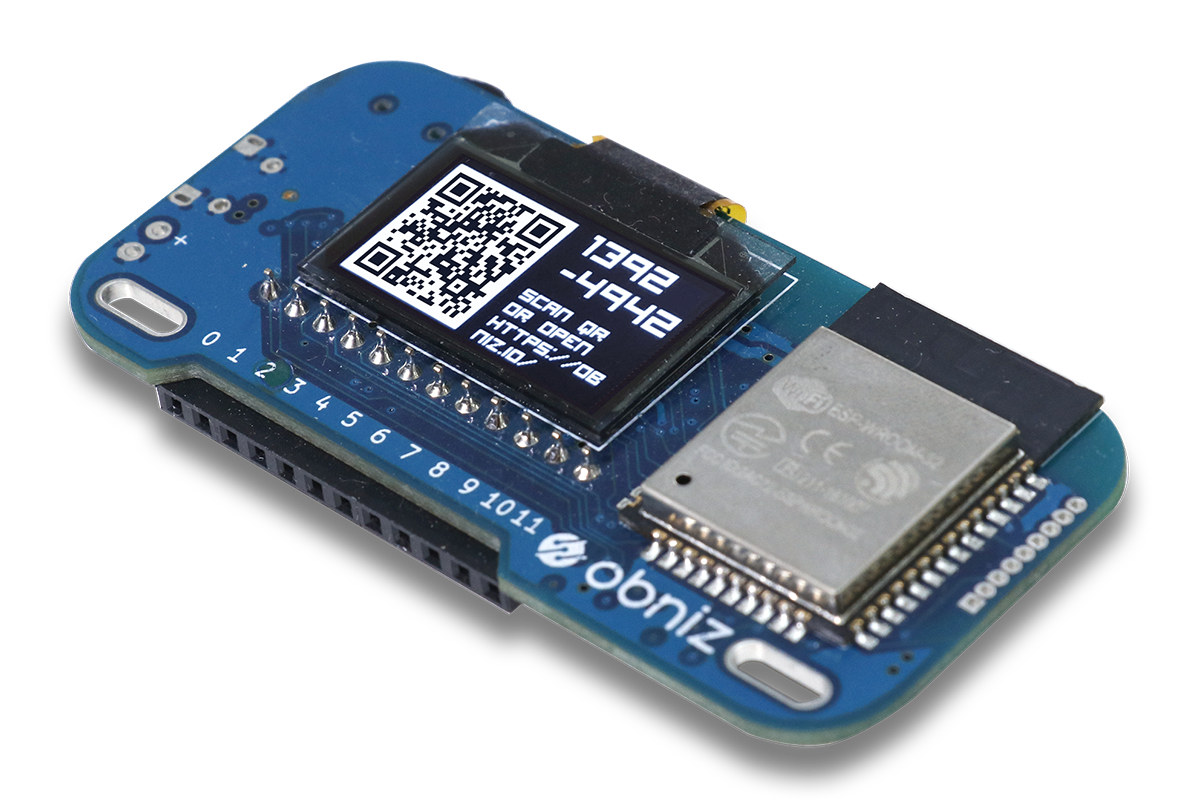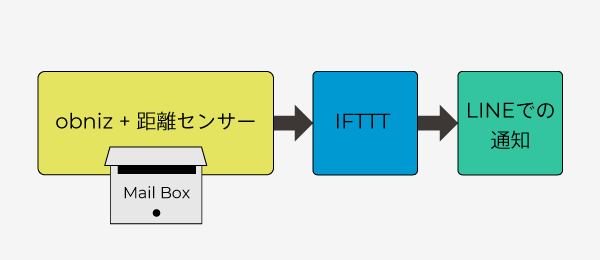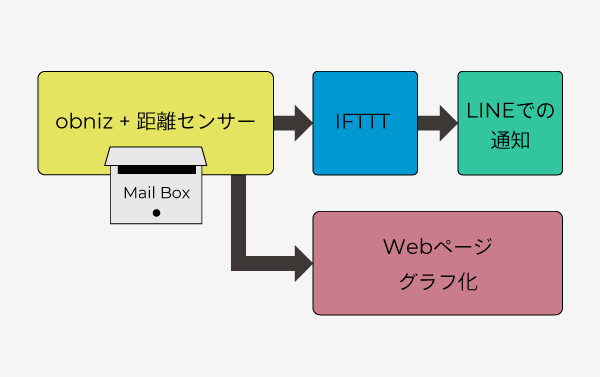In this article, I’d like to show you what you can do, for example, with obniz, a board that makes it easy to go IoT.
Contents
Notify LINE when mail arrives in the mailbox
In recent years, there has been an accelerated movement toward the IoT, which aims to make the world richer and more convenient by connecting all things to the Internet.
One of the advantages of the IoT is that everything is connected to the Internet. It is possible to communicate wirelessly with things connected to the Internet, even when they are far away from each other. Therefore, even if it’s not the thing in front of you, you can easily learn about that thing and the situation around it.
As an example of IoT that can be easily realized using obniz, I’ll show you an example of notifying LINE when mail arrives in the mailbox.
What to prepare
- obniz and battery
It’s a board that makes IoT easy to implement.

- (Infrared) distance sensor.
It is a sensor that can measure the distance from the object in front of it (see the linked article for details). There are also ultrasonic sensors, but I recommend the infrared sensor for close range, as it has better accuracy.

- A smartphone (or PC) with the LINE app
How do you make it?
This is how the system works.
①A distance sensor mounted on the ceiling of the mailbox constantly measures the distance to the floor of the mailbox, and when the mail is placed in the mailbox, the distance is reduced so that it can detect that the mail has arrived.
②When it detects that the mail has arrived, it hits Webhook with obniz and sends a notification to LINE with LINE Notify via IFTTT.
③It makes me happy to know that the mail has arrived!

Figure out when your mail will arrive
In the chapter above, I gave an example of a system that takes advantage of the IoT’s ability to communicate wirelessly with objects in a remote location and sends a notification to LINE when mail arrives at the mailbox.
But this isn’t the only benefit of the IoT. One of the advantages is that the values measured from each sensor can be stored in the cloud on the Internet and displayed in graphs and other forms of visualization, and the findings can be analyzed and used for system operation. we can assume that not just one sensor but many sensors will work together to exchange huge amounts of data.
Let’s consider an extension of the system introduced in the previous chapter. Since the post is always connected to the Internet, for example, you can accumulate the time the mail is delivered.
From this data, you can see what hours of the day mail is most likely to be delivered to that house, how often things are delivered, and so on. You could display this on a graph for easy to understand, or display a “Thank you always” message on the mailbox at a time when it is most likely to be delivered.
Since obniz allows you to write programs with Javascript on a web page written in HTML, you can easily reflect the data obtained from obniz on the web page in real time.

You can easily achieve IoT with obniz, just like the system featured in this article. On the official website, there is a detailed introduction to obniz, tutorials, and production examples, so be sure to check it out.
→ obniz